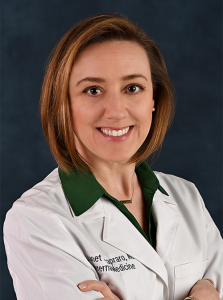Managing Post-Covid Health Care
It’s the new normal. Best to be ready and stay healthy!
At last, the worst of the pandemic is behind us! Now we’re left with a different set of health concerns to address for family members.
We turned to local experts to find out what we should prioritize. CHOP’s Dr. Jacquelyn Detweiler shares a “Back to School Health Checklist,” Embark at the Main Line’s Yun Jung Lee looks at the “Pandemic and Teens’ Mental Health,” and Penn Medicine’s Dr. Janet Jacapraro lays out health checks in “Seniors Health Post-Pandemic.”
It’s the new normal. Best to be ready and stay healthy!
Back to School Health Checklist
It’s not too early to get ready.
Jacquelyn Detweiler, DO, FAAP CHOP Primary Care, Kennett Square
Yes it’s still summer, and many of us are enjoying vacations and the chance to catch up with friends and family we haven’t seen since before the COVID-19 pandemic began.
The start of the new school year is far from our thoughts. Yet it’s important to help your child start the school year at their best so they can thrive and reach their full potential.
This Back to School Health Checklist will help you prepare your child to be in their best health and ready to learn on the first day back to school.
General Health
A yearly physical exam gives parents and kids the opportunity to assess growth progress and discuss health problems or concerns with their trusted healthcare provider.
In addition, students who plan to play sports in school are required to have a pre-participation form completed before the start of the sport season. This sports checkup will help identify any risks your child may have related to playing a sport.
Also, be sure to let your provider know about any new or recent injuries or health problems of your child, as well as any serious health problems in your family.
Mental Health
It’s common for both parents and students to feel anxious at the start of a school year. Whether your child is starting a new school or a new grade level, return to the school schedule and responsibility of classes can be stressful.
This may be especially so for students who were in virtual classes due to the pandemic. They may be nervous returning to an in-person traditional school day.
Parents can help ease the transition by talking about what to expect on the first day back, what the school day will look like, what may be the same at school and what may be different this school year.
Reach out to the school’s guidance counselor and ask about visiting the school before the first day to help your child be more comfortable. You may even have a friend join you so you can all explore together.
Remind your child of the things they enjoy about going to school (seeing friends, a certain teacher, a favorite class). Stress those positive memories.
For younger children, practice separating ahead of time by leaving kids with a caregiver. It’s best to adopt a simple goodbye routine that’s short, sweet and reassuring.
Vaccinations
Make sure your child is up-to-date with all immunizations for their safety and the safety of their classmates. Vaccines save children from unnecessary pain, illness and death.
In Pennsylvania, there are mandatory vaccines your child needs to attend school. Check with your healthcare provider for both required and recommended shots.
Flu vaccine: The CDC recommends yearly vaccination for everyone above 6 months of age. Vaccination reduces the risk of your child contracting the influenza virus, which can cause serious illness.
COVID-19 vaccine: The AAP (American Academy of Pediatrics) recommends teens 12 and older get vaccinated against COVID-19 to reduce the risk of contracting and spreading the virus.
If you are hesitant about vaccinating your child, please reach out to your child’s physician to discuss these concerns.
Medications and Medical Conditions
It’s important to keep schools informed of any potentially serious medical conditions your child may have. Make sure all emergency contact information is correct.
Remember to refill emergency inhalers, epi-pens, insulin and any other medications needed in case of an emergency at school.
If your child has asthma, diabetes, allergies requiring an epi-pen, or any other health condition that requires regular medication and monitoring, remember to submit an updated medication/medical action plan form to the school nurse before the first day of school. The information should include necessary medications, when and in what circumstances they should be taken, and instructions on side effects and what should be done if any issues arise.
It’s also a good idea to inform the school nurse of any prescription medications your child takes at home and any other medical conditions they may have, including mental health concerns. This will help the school nurse understand your child’s needs and provide the best medical care.
Sick at School? Have a Plan
Many parents work, and a call from the school nurse causes stress and anxiety, as well as a disruption to the work day. Caring for your child when they are sick or need to be picked up from school takes planning and preparation. Identify a trusted family member or friend who can step in when there’s an emergency and you can’t be there.
Due to COVID-19, many schools may have changed their “sick” policy, so be sure to check with your child’s school and be aware of any new rules.
Sleep
Many parents ease up on the sleep routine during the summer. But because getting enough quality sleep can help with your child’s academic success, it’s important to transition kids back to a regular bedtime a few weeks before school starts. Remember it takes time to adjust to a new sleep schedule.
Sleep benchmarks call for school-aged kids getting 10–12 hours of sleep per night while teens require 9–10 hours.
Some sleep tips: Remove screens from the bedroom at night, keep kids active during the day, adopt a calming bedtime routine, cut out sugar and caffeine-laden snacks or energy drinks before bedtime and limit late-afternoon naps.
Nutrition
Including breakfast in your child’s day has many health benefits for their growing bodies and developing brains. Studies have shown eating a healthy breakfast increases performance and focus at school. Mornings can be hectic so consider meal prep the night before and some grab-and-go options as well. Whole-grain breads, cold cereals, oatmeal, yogurt, fruit, protein bars or smoothies are all easy ways to ensure a healthy start to the day.
Backpack Burdens
The AAP advises that a child’s backpack should weigh no more than 20 percent of their body weight to reduce the chance of back pain or injury. A lightweight backpack design with two wide, padded shoulder straps and a padded back is recommended. A backpack that’s too heavy can cause pain and strain the muscles.
Vision
Nearsightedness, farsightedness, astigmatism and other vision problems can cause barriers to learning, and lead to behavioral and attention issues. Since vision changes frequently between ages 6 to 18, comprehensive yearly eye exams are important to your child’s ability to thrive in the classroom.
Young children may not be able to recognize their vision problems. Watch for squinting, eye rubbing and complaints of headaches—all may indicate sight issues.
Dental Health
The AAP also recommends your child see the dentist every six months for preventative care. Pain from cavities can distract your child from learning or keep them home from school.
Pre-Teen Girls

What if your daughter gets her period for the first time at school?
Plan ahead by discussing the possibility and educate her on how to take feminine products to school and proper feminine hygiene when away from home. Encourage her to reach out to the school nurse as well.
A little bit of planning will ensure your child a smooth transition and healthy start to the new school year!
Jacquelyn Detweiler, DO, FAAP, is an attending physician at CHOP Primary Care, Kennett Square, with expertise in newborn and infant care, breast feeding, adolescent care, school and behavioral problems, and teen mental health. A graduate of the Philadelphia College of Osteopathic Medicine, she’s worked at CHOP since 2015 and believes her osteopathic education gives her a holistic approach toward patient care.
Pandemic & Teens’ Mental Health
Social distancing and public health measures took a toll on teens.
Yun Jung Lee, M.A., ATR-BC, LPC, Embark at Main Line
The COVID-19 pandemic disrupted our lives in many ways and, sadly, teens and pre-teens have been especially hard hit. Since many mental health issues that develop during adolescence, if untreated, can continue and affect overall quality of life, this issue is particularly important to address.
Mental health experts have expressed concern about the toll this past year has taken on the mental health of young people in the United States. With in-person classes being closed for months for most students—both at the end of the 2019–2020 and most of the 2020–2021 school years—there has been an increased number of teens showing signs of anxiety and depression.
The resulting emotional and psychological pain associated with these conditions can lead some teens to decide to self-medicate with substances such as alcohol and illegal drugs or engage in other risky behaviors.
Even before the pandemic hit in 2020, the country faced challenges in adequately addressing the mental health needs of adolescents. According to the Centers for Disease Control and Prevention, more than 1 in 3 high school students had experienced persistent feelings of sadness or hopelessness in 2019, a 40% increase since 2009. Also in 2019, approximately 1 in 6 youths reported making a suicide plan, a 44% increase since 2009.
Since the pandemic, adolescent emergency room visits and hospitalizations have also increased significantly. CDC statistics indicate that mental health-related emergency department visits among adolescents aged 12 to 17 increased 31% in 2020 compared to the previous year—a startling one-year jump.
Contributing Factors
“Covid was an extra thing, it just made me kind of collapse.” “I became really lonely. It was really hard to keep up with virtual learning. Eventually I just gave up and I don’t have any motivation.” “It’s hard to talk about my emotions with my parents. They are already stressed out.”
These are a few examples of what clinicians have been hearing from teens who sought treatment since the pandemic’s start.
At the beginning of the pandemic in 2020, health care professionals saw many teens having anxiety about getting infected by COVID-19 themselves, along with being fearful of their friends and family becoming ill from the virus. There was also uncertainty about what school would look like and how everyone would be safe.
During subsequent months, this building anxiety can lead to a chronic stress reaction, and without the usual releases. Teens couldn’t go to school and weren’t able to access their healthy stress outlets to improve their mood. Such outlets as after-school activities, playing sports, hanging out with friends and getting support from school staff—like school counselors—were not available during quarantine. Consequently, the risk of developing and worsening symptoms of anxiety, depression and other mental illnesses was exacerbated.
Many adolescents reported having difficulty even talking about their concerns with their parents. And to complicate matters, parents were also severely affected by the pandemic, with their own emotional and financial worries.
Teens also reported that the emotional toll and unsettling experiences were too overwhelming for them to process and to express. Months of social isolation too often led to feelings of loneliness, sadness and helplessness.
Long-term Effects
Adolescence is a period where young people are starting to explore their own boundaries and sense of identity by trying new things, figuring out their place among peers and within their communities. But as a matter of public health safety during the pandemic, teens were limited or barred completely from many growth opportunities. As a result, typical child development milestones have been affected.
On the positive side, some teens have come through this past year with a sense of resiliency. Those fortunate ones have identified ways to cope and deal with these stressors. This type of empowering experience can boost adolescents’ ability to build resilience and can provide strength to navigate uncertain and stressful situations in the future.
However, adolescents are still vulnerable and many need additional support and external interventions to ensure healthy brain development and stability.
Parents can support their teen by doing such things as —
Demonstrating ways to practice self-care and inviting their teens to join them.
Maintaining open communication and validating their teen’s experiences.
Encouraging and providing support to establish routine and structure in their lives.
Brainstorming creative and safe ways for teens to continue to engage with peers.
Plus it’s important to remember to create a space for joy and conversation so all young people can once again be a part of the social fabric of life.
Signs of Distress
Parents must be vigilant in recognizing signs of distress in their teens. While it’s normal for anyone to experience anxiety during uncertain times, if you notice your teen experiencing difficulty functioning, they may need special attention and support from a professional counselor.
Parents should be on the lookout for signs of distress such as —
Changes in mood that are unusual for your child, such as irritability, feeling hopeless and helplessness.
Trouble maintaining relationships and engaging with friends and family.
Loss of interest in activities that your teen previously enjoyed.
Trouble falling or staying asleep, or trouble getting out of bed.
Changes in appetite such as restricting food intake or eating all the time.
Trouble attending school or declining academic effort.
Trouble taking care of personal hygiene.
Engaging in self-destructive behavior such as self-harm or using illegal drugs or alcohol.
Thoughts of death or suicide or talking about them.
If you’re concerned about your teen’s mental health, you should talk immediately to your teen’s primary care physician. A doctor can provide an assessment and help you with other resources when necessary.

Local mental health organizations offer a variety of structured treatments and levels of care for adolescents and young adults. You’ll find such services as assessment, medication management, outpatient services, partial hospitalization, in-home therapy and short-term residential and wilderness programs. And, as the pandemic has demonstrated, telemedicine can be a great help with mental health issues.
Among these many options, you can find the right kind of help should your child need it.
Yun Jung Lee, M.A., ATR-BC, LPC is a Registered & Board-Certified Art Psychotherapist, Licensed Professional Counselor and Certified adoption therapist currently working as a clinical director at Embark at Main Line in Berwyn. She graduated from MCP Hanemann University (now Drexel University) with Master’s of Creative Arts in Therapy and has over 20 years of clinical experience working with youth and family.
Seniors’ Health Post-Pandemic
Health checks in the new normal
Interview with Janet Jacapraro, M.D., Penn Medicine
After more than one year of following stringent guidelines to protect themselves, the elderly population is eager to return to some sense of normalcy. Unfortunately, fears and anxiety about how to do that, paired with the physical and mental toll the restrictions have had on their wellbeing, are holding them back.
Recent studies have found that adults aged 65 and older have reported a significant decrease in activity level, sleep quality and wellbeing during the COVID-19 pandemic. The research further shares that depression among this population was a strong contributing factor to these declines, in addition to causing reduced cognitive functioning.
According to Janet Jacapraro, M.D., an Internal Medicine physician at Penn Primary Care and Integrative Medicine Whiteland, social distancing was certainly a key issue for older adults. “Many seniors don’t have access to technology or are unable to use it proficiently. Because of that barrier, it’s been really difficult for a lot of older adults to keep socially connected with loved ones.”
She went on to explain, “Even things like ordering groceries and meals, which many of us started to do online, was a challenge for some seniors. Meeting with their medical providers was also technology-dependent for a long time, as many practices were offering only telemedicine visits except for emergencies.”
“Physical and mental health problems, along with sleep deprivation and stress, can contribute to cognitive decline. All of those things have been exacerbated as part of this pandemic,” says Dr. Jacapraro. People who have cognitive difficulties have had a harder time adjusting to new rules and regulations. She adds, “It’s hard for somebody living with dementia to adhere to wearing a mask, maintaining six feet of distance, and remembering to wash their hands frequently.”
Reduced Physical Activity and Nutrition Changes
Not only does isolation and social distancing affect a person’s mental health, it impacts their physical health as well. For seniors, especially, physical activity is important to maintaining mobility and independence. The less active they are, the less active they are able to be. “When community gyms closed, it became more difficult for many seniors to stay mobile and independent,” says Dr. Jacapraro.
Nutritional changes further exacerbated the plight of the elderly population during this time. Many seniors had limited access to grocery stores—especially if they were dependent on loved ones or public transportation.
“If visits to the grocery store were limited, older adults required shelf-stable foods rather than fresh produce and unprocessed foods. This change in diet can be associated with dysregulation of blood sugar, increased cholesterol, fatigue and decreased physical activity, sleep disruption and mood instability,” says Dr. Jacapraro.
Impact on Caregivers
Senior citizens are not the only ones who have been affected by these limitations and have had their health decline. An article by Alicia Bayne published in CDC Foundation, found that “caregivers reported fear and anxiety as they struggled to balance their own physical and mental health needs with those of the loved ones in their care.”
Dr. Jacapraro urges caregivers to first and foremost take care of themselves. “You can’t care for someone else if you’re not caring for yourself.” In addition, she recommends that caregivers should be supportive and willing to help—whether it’s providing transportation to doctor’s appointments, making sure medications are up to date, or being able to listen and validate the feelings that seniors are having.
Steps to Health and Wellness
Despite the many tolls this pandemic has had on our senior population both mentally and emotionally, there are ways to combat these effects. Dr. Jacapraro, recommends to first reconnect with your medical provider. It’s important to get up-to-date with vaccinations and health screenings as well as medications.
She also points out that it’s time to get physically active again if you haven’t been. “For older patients, it’s really important to start low and go slow. Meaning, if you used to walk two miles a day, you don’t necessarily need to begin again at that level. You can start walking five minutes a day and then work your way up.” Physical activity will help keep seniors independent and mobile, and it will help with sleep quality and mood regulation.

Lastly, Dr. Jacapraro suggests renewing social contacts again. Whether it’s going to a worship service or reconnecting with family in person or virtually, these connections are essential.
If you believe you can begin to make these changes on your own, go for it. But if it’s too much, seniors should reach out to their primary care provider. “The primary care provider can tailor a plan in the context of medical issues and life circumstances that will help get seniors back to where they were, and at their own pace.”
Dr. Jacapraro received her medical degree from University of Maryland School of Medicine and completed her residency at Johns Hopkins Bayview Medical Center. She is board certified in internal medicine and sees patients at Penn Primary Care and Integrative Medicine, Whiteland.
Our Favorite Resources
- Berkshire Hathaway Holly Gross
- Cecil County Tourism
- Chester County Community Foundation
- Chester County Hospital, Penn Med
- Delaware Museum of Natural History
- Key Financial, Inc.
- King Construction
- Sage Life
- Sugarbridge Kitchen & Bath
- SV Dental
- Thorncroft Equestrian Center
- Tim Vaughan
- Welcome Neighbor
- West Chester BID
- Walter J. Cook




